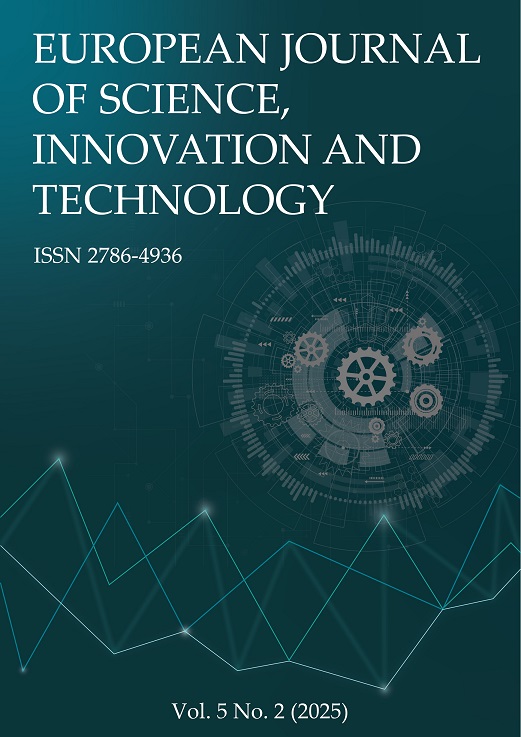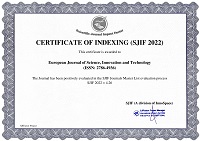Upward Initiated Lightning Interactions with Wind Turbines using the Extended Vertical Tri-Pole Cloud Charge Distribution Model
Abstract
Lightning can either be downward initiated or upward initiated. In the presence of a thundercloud, tall wind turbines are increasingly subjected to upward lightning attachment triggered by the wind turbine itself. Lightning strike frequency, point of lightning attachment and lightning protection systems have been evaluated based on downward initiated lightning. However, these might not be effective for upward lightning. Research has shown that the maximum electric field strength distributed on the surface of the wind turbine and the surrounding air is very important in determining the point of inception of upward leader and would help in improving lightning protection systems. In contrast to static objects, maximum electric field strength required for the inception of upward leader from wind turbine changes majorly due to blade rotation and certain blade conditions such as polluted blade surface, varying receptor sizes, receptor positions on the wind turbine, types and shapes of protection methods. Maximum electric field variations due to these blade conditions have not been considered well in literature. Analysing the maximum electric field strength and conducting experimental tests on a full-scale wind turbine is presently very difficult due to height constraint and lack of suitable equipment. This paper extends the vertical tri-pole cloud charge distribution model for analysing lightning interactions with modern large wind turbines. The model is designed and analysed in Comsol Multiphysics software and then evaluated with high voltage strike attachment test experiment. The model is intended for testing various receptor sizes, discrete receptor positions, various lightning protection systems, effect of polluted blade surface, full scale blade length as well as scaled blade tip. The blade is rotated and tested in selected five positions to investigate the performance of wind turbine lightning protection systems to determine the complete successes and failures. The proposed model has shown lightning discharges initiated from the blade surface as well as the receptor, in this case, proficiency and failure of receptor are determined. The simulation results are in agreement with that of the experiment and can be extended for larger wind turbines and also for future work. The model is suggested as a replacement for the invalidated EGM in IEC 61400 standard. Manufacturers may look at the findings of this work when dealing with the design aspects of very large future wind turbine.
References
Alonso, M. & Irastorza, D. (2008). Dynamic wind turbine lightning protection behaviour under strom conditions. In 29th International Conference on Lightning Protection.
Ancona, D. & McVeigh, J. (2001). Wind turbine-materials and manufacturing fact sheet. Princeton Energy Resources International, LLC.
Bazelyan, E.M. & Raizer, Y.P. (2000). Lightning physics and lightning protection. CRC Press.
Cooray, V. (2010). Lightning protection. London: The Institution of Engineering and Technology.
Godson, I., et al. (2019). Performance Enhancement of Lightning Protection Systems for Offshore Wind Turbine Blades. In International Symposium on Lightning Protection (XV SIPDA), São Paulo, Brazil.
Imyanitov, I., Chubarina, E. & Shvarts, Y.M. (1971). Cloud Electricity. Gidrometeoizdat, Moscow.
Jeong-min, W., Sung-man, K. & Munno, J. (2024). Analysis of polarity characteristics of lightning attachment and protection to wind turbine blades. Elsevier.
MacGorman, D.R. & Rust, W.D. (1998). The electrical nature of storms. Oxford University Press on Demand.
Milelr, B. (2023). Vestas begins testing on first V164 80-metre blade. Retrieved from: http://www.windpoweroffshore.com/article/1211179/vestas-begins-testing-first-v164-80-metre-blade.
Minowa, M., et al. (2012). A study of lightning protection for wind turbine blade by using creeping discharge characteristics. In Lightning Protection (ICLP), 2012 International Conference. IEEE.
Montanyà, J., Van Der Velde, O., & Williams, E. R. (2014). Lightning discharges produced by wind turbines. Journal of Geophysical Research: Atmospheres, 119(3), 1455-1462.
Naka, T., et al. (2006). Experimental studies on lightning protection design for wind turbine blades. Proceedings of Euro-pean Wind Energy Association (EWEC), Athen, Greece.
Peesapati, V. & Cotton, I. (2009). Lightning protection of wind turbines—A comparison of real lightning strike data and finite element lightning attachment analysis. In Sustainable Power Generation and Supply. SUPERGEN'09. International Conference. IEEE.
Peesapati, V., Cotton, I., Sorensen, T., Krogh, T., & Kokkinos, N. (2011). Lightning protection of wind turbines–a comparison of measured data with required protection levels. IET Renewable Power Generation, 5(1), 48-57.
Rachidi, F., Rubinstein, M., Montanya, J., Bermudez, J. L., Sola, R. R., Sola, G., & Korovkin, N. (2008). A review of current issues in lightning protection of new-generation wind-turbine blades. IEEE Transactions on Industrial Electronics, 55(6), 2489-2496.
Radičević, B. M., & Savić, M. S. (2011). Experimental research on the influence of wind turbine blade rotation on the characteristics of atmospheric discharges. IEEE Transactions on Energy Conversion, 26(4), 1181-1190.
Rakov, V.A. & Uman, M.A. (2003). Lightning: physics and effects. Cambridge University Press.
Rodrigues, R., et al. (2009). Analysis of the thunderstorm activity in Portugal for its application in the lightning protection of wind turbines. IEEE Latin America Transactions, 7(5).
Sadiku, M.N. (2014). Elements of electromagnetics. Oxford University Press.
Shindo, T., Asakawa, A., & Miki, M. (2011). Characteristics of lightning strikes on wind turbine blades. Experimental study of the effects of receptor configuration and other parameters. Electrical Engineering in Japan, 176(3), 8-18.
Wang, D., et al. (2008). Observed characteristics of upward leaders that are initiated from a windmill and its lightning protection tower. Geophysical Research Letters, 35(2).
Warner, T. A., Lang, T. J., & Lyons, W. A. (2014). Synoptic scale outbreak of self‐initiated upward lightning (SIUL) from tall structures during the central US blizzard of 1–2 February 2011. Journal of Geophysical Research: Atmospheres, 119(15), 9530-9548.
Yoh, Y. & Shigeru, Y. (2011). Proposal of lightning damage classification to wind turbine blades. in Lightning (APL), 7th Asia-Pacific International Conference. IEEE.
Yokoyama, S. (2011). Lightning protection of wind turbine generation systems. in Lightning (APL), 7th Asia-Pacific International Conference. IEEE.
Zavareh, H.T. (2012). Wind turbines protection against the lightning struck using a combined method. In Renewable Energy and Distributed Generation (ICREDG), 2012 Second Iranian Conference. IEEE.
Zhou, H., et al. (2011). Close electric field changes associated with upward-initiated lightning at the Gaisberg Tower. In Lightning Protection (XI SIPDA), 2011 International Symposium. IEEE.
Zhou, H., Diendorfer, G., Thottappillil, R., Pichler, H., & Mair, M. (2012). Measured current and close electric field changes associated with the initiation of upward lightning from a tall tower. Journal of Geophysical Research: Atmospheres, 117(D8).
Copyright (c) 2025 Godson I. Ikhazuangbe, Osawaru N. Osarimwian, F.O. Phillip-Kpae, Wocha Chikagbum, Gibson B. Iware

This work is licensed under a Creative Commons Attribution 4.0 International License.


 ISSN
ISSN 











